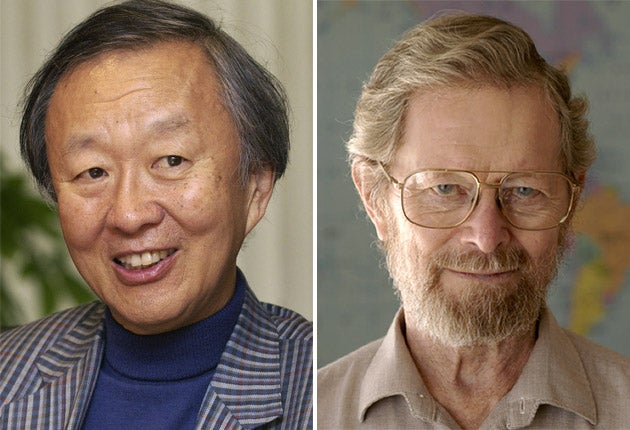'Master of Light' awarded Nobel Prize
Physicist honoured for breakthrough he made at a laboratory in Esse

He is one of three elderly scientists who earned the nickname the "masters of light", after their discoveries in physics changed the lives of millions of people.
Yesterday, Charles Kuen Kao, the British inventor of the optical fibres which led to the development of broadband internet, was part of a team awarded the Nobel Prize for Physics.
The 75-year-old was awarded one half of the prestigious award, with the other half shared between two American physicists. The Nobel Assembly hailed his "groundbreaking achievements" and described his work as "something that has really changed our lives". The three winners share a prize of 10 million Swedish kronor (£900,000).
Dr Kao's research led to the creation of technology networks that carry voice, video and high-speed internet data around the world. Information can be sent along glass fibres over distances of 100km and today 3 million kilometres of optical fibre has been laid in the UK as a result of his work.
Dr Kao, who was born in China, graduated from Woolwich Polytechnic in east London and completed his PhD in electrical engineering at the University of London. In 1966, he made a sudden breakthrough whilst working at Standard Telephones and Cables laboratory in Essex. He realised that light loss could be reduced by removing impurities in the glass, instantly solving the problem of losing the signal over long distances. "What the wheel did for transport, the optical fibre did for telecommunications," said Richard Epworth, a colleague of Dr Kao's at Standard Telephones and Cables. "Optical fibre enables you to transmit information with little energy over long distances and to transmit information at very high rates."
Although aware of the huge changes brought about by his research, Dr Kao insisted he had not expected the award. "Fibre optics has changed the world of information so much in these last 40 years," he said.
The other half of the prize was awarded to two US physicists credited with inventing the eye of the digital camera. William Boyle, 85, and George Smith, 79, discovered how to transform light into pixels in 1969. The Royal Swedish Academy of Sciences says their discovery "revolutionised photography, as light could now be captured electronically instead of on film". Their charge-coupled device (CCD) technology built upon Einstein's discovery of the photoelectric effect, for which he was awarded the Nobel Prize in 1921.
Dr Boyle said he was reminded of his work with Dr Smith "when I see everybody using our little digital cameras everywhere", but added that the most impressive use of the technology so far had been its role in capturing images of Mars.
Join our commenting forum
Join thought-provoking conversations, follow other Independent readers and see their replies
Comments
Bookmark popover
Removed from bookmarks